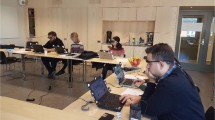Abstract
All those that work in markets research know, for long, that there is a distance between the intentions that consumers manifest overtly (e.g. in surveys or focus groups) and what they practise. One cause is that these methods assume the consumer as a full rational decision-maker, although most consumption acts arise in the non-conscious plan, where intuition and emotions play the most important roles. Traditional inquiry methods ground on the former while consumption decision processes live in the latter. The unfit is notorious. Consumer neuroscience aims to go beyond this hurdle by directly questioning the brain processes. We use in this study EEG, eye-tracking, EDA/SCR, and heart rate monitoring to measure differences in the redesign of the logo and communication materials of the largest appliance retailer in Portugal, Worten. The results allowed identifying and measuring ameliorations in consumers’ emotional engagement in the TV commercials and media layout. Commercials tend now more towards approach than withdrawal and the flow of the eyes while searching for information in printed materials is more placid and smoother. These improvements contribute to enhance marketing communication with consumers.
Access this chapter
Tax calculation will be finalised at checkout
Purchases are for personal use only
Similar content being viewed by others
Notes
- 1.
Electroencephalography.
- 2.
Electrodermal activity/Skin conductance responses.
- 3.
“Mobiliário urbano para informação” Street furniture for information.
- 4.
Event-related potential.
- 5.
Region of interest.
References
Østergaard, P., Jantzen, C.: Shifting perspectives in consumer research: from buyer behaviour to consumption studies. In: Beckmann, S.C., Elliott, R.H. (eds.) Interpretive Consumer Research—Paradigms. Methodologies & Applications. Copenhagen Business School Press, Copenhagen (2002)
Walla, P., Mavratzakis, A., Bosshard, S.: Neuroimaging for the affective brain sciences, and its role in advancing consumer neuroscience. In: Fountas, K. (ed.) Novel Frontiers of Advanced Neuroimaging. InTech (2013)
Chamberlain, L., Broderick, A.: The application of physiological observation methods to emotion research. Qual. Mark. Res.: Int. J. 10, 199–216 (2007). https://doi.org/10.1108/13522750710740853
Havlena, W.J., Holbrook, M.B.: The varieties of consumption experience: comparing two typologies of emotion in consumer behavior. J. Consum. Res. 13, 394–404 (1986). https://doi.org/10.1086/209078
Mehrabian, A.: Framework for a comprehensive description and measurement of emotional states. Genet. Soc. Gen. Psychol. Monogr. 121, 339–361 (1995)
Mehrabian, A., de Wetter, R.: Experimental test of an emotion-based approach to fitting brand names to products. J. Appl. Psychol. 72, 125–130 (1987). https://doi.org/10.1037/0021-9010.72.1.125
Vecchiato, G., Cherubino, P., Maglione, A.G., Ezquierro, M.T.H., Marinozzi, F., Bini, F., Trettel, A., Babiloni, F.: How to measure cerebral correlates of emotions in marketing relevant tasks. Cogn. Comput. 6, 856–871 (2014). https://doi.org/10.1007/s12559-014-9304-x
Ariely, D., Berns, G.: Neuromarketing: the hope and hype of neuroimaging in business. Nat. Rev. Neurosci. 11, 284–292 (2010). https://doi.org/10.1038/nrn2795
Smidts, A., Hsu, M., Sanfey, A.G., Boksem, M.A.S., Ebstein, R.B., Huettel, S.A., Kable, J.W., Karmarkar, U.R., Kitayama, S., Knutson, B., Liberzon, I., Lohrenz, T., Stallen, M., Yoon, C.: Advancing consumer neuroscience. Mark. Lett. 25, 257–267 (2014). https://doi.org/10.1007/s11002-014-9306-1
Plassmann, H., Venkatraman, V., Huettel, S., Yoon, C.: Consumer neuroscience: applications, challenges, and possible solutions. J. Mark. Res. 52, 427–435 (2015). https://doi.org/10.1509/jmr.14.0048
Davidson, R.J., Ekman, P., Saron, C.D., Senulis, J.A., Friesen, W.V.: Approach-withdrawal and cerebral asymmetry: emotional expression and brain physiology: I. J. Pers. Soc. Psychol. 58, 330–341 (1990). https://doi.org/10.1037/0022-3514.58.2.330
Davidson, R.J.: Anterior cerebral asymmetry and the nature of emotion. Brain Cogn. 20, 125–151 (1992). https://doi.org/10.1016/0278-2626(92)90065-T
Silberstein, R.B., Nield, G.E.: Measuring emotion in advertising research: prefrontal brain activity. IEEE Pulse 3, 24–27 (2012). https://doi.org/10.1109/MPUL.2012.2189172
Ohme, R., Reykowska, D., Wiener, D., Choromanska, A.: Application of frontal EEG asymmetry to advertising research. J. Econ. Psychol. 31, 785–793 (2010). https://doi.org/10.1016/j.joep.2010.03.008
Lin, M.-H., Cross, S.N.N., Jones, W.J., Childers, T.L.: Applying EEG in consumer neuroscience. Eur. J. Mark. 52, 66–91 (2018). https://doi.org/10.1108/EJM-12-2016-0805
Telpaz, A., Webb, R., Levy, D.J.: Using EEG to predict consumers’ future choices. J. Mark. Res. 52, 511–529 (2015). https://doi.org/10.1509/jmr.13.0564
Pieters, R., Wedel, M., Batra, R.: The stopping power of advertising: measures and effects of visual complexity. J. Mark. 74, 48–60 (2010). https://doi.org/10.1509/jmkg.74.5.48
Hutton, S.B., Nolte, S.: The effect of gaze cues on attention to print advertisements. Appl. Cogn. Psychol. 25, 887–892 (2011). https://doi.org/10.1002/acp.1763
Ares, G., Giménez, A., Bruzzone, F., Vidal, L., Antúnez, L., Maiche, A.: Consumer visual processing of food labels: results from an eye-tracking study. J. Sens. Stud. 28, 138–153 (2013). https://doi.org/10.1111/joss.12031
Hurley, R.A., Ouzts, A., Fischer, J., Gomes, T.: Effects of private and public label packaging on consumer purchase patterns. Packag. Technol. Sci. 26, 399–412 (2013). https://doi.org/10.1002/pts.2012
Bechara, A., Damásio, H., Tranel, D., Damásio, A.R.: Deciding advantageously before knowing the advantageous strategy. Science 275, 1293–1295 (1997). https://doi.org/10.1126/science.275.5304.1293
Jurcak, V., Tsuzuki, D., Dan, I.: 10/20, 10/10, and 10/5 systems revisited: Their validity as relative head-surface-based positioning systems. NeuroImage 34, 1600–1611 (2007). https://doi.org/10.1016/j.neuroimage.2006.09.024
Vecchiato, G., Cherubino, P., Trettel, A., Babiloni, F.: Neuroelectrical Brain Imaging Tools for the Study of the Efficacy of TV Advertising Stimuli and their Application to Neuromarketing. Springer-Verlag, Heidelberg (2013)
Welch, P.D.: The use of fast Fourier transform for the estimation of power spectra: a method based on time averaging over short, modified periodograms. IEEE Trans. Audio Electroacoust. 15, 70–73 (1967). https://doi.org/10.1109/TAU.1967.1161901
Author information
Authors and Affiliations
Corresponding author
Editor information
Editors and Affiliations
Rights and permissions
Copyright information
© 2020 Springer Nature Singapore Pte Ltd.
About this paper
Cite this paper
dos Santos, J.P.M., Ferreira, H., Reis, J., Prata, D., Simões, S.P., Borges, I.D. (2020). The Use of Consumer Neuroscience Knowledge in Improving Real Promotional Media: The Case of Worten. In: Rocha, Á., Reis, J., Peter, M., Bogdanović, Z. (eds) Marketing and Smart Technologies. Smart Innovation, Systems and Technologies, vol 167. Springer, Singapore. https://doi.org/10.1007/978-981-15-1564-4_20
Download citation
DOI: https://doi.org/10.1007/978-981-15-1564-4_20
Published:
Publisher Name: Springer, Singapore
Print ISBN: 978-981-15-1563-7
Online ISBN: 978-981-15-1564-4
eBook Packages: Intelligent Technologies and RoboticsIntelligent Technologies and Robotics (R0)




